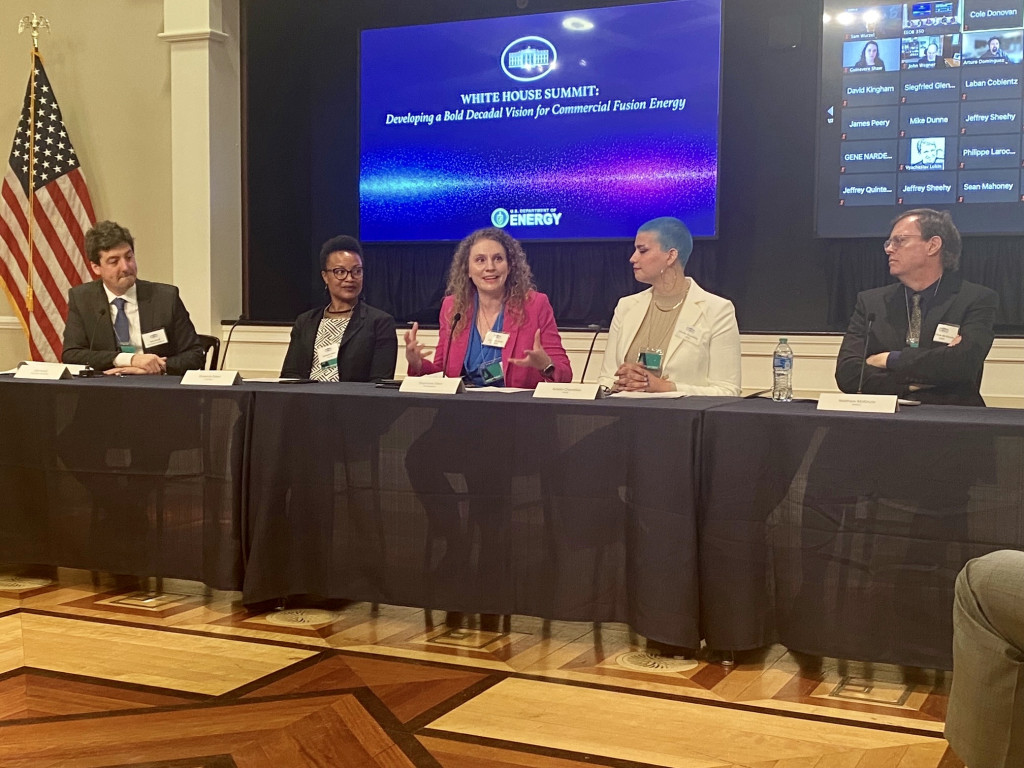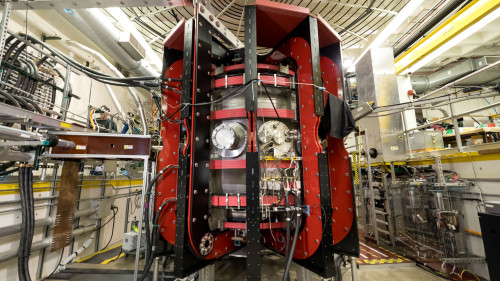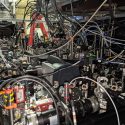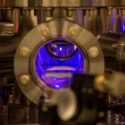UW–Madison part of effort to advance fusion energy with machine learning

Steffi Diem (middle) participating in a panel at the White House Summit on “Developing a Bold Decadal Vision for Commercial Fusion Energy.” Diem has joined a collaboration across multiple institutions that will use machine learning to better understand magnetic fusion energy.
Researchers at the University of Wisconsin–Madison are taking part in a new collaboration built on open-science principles that will use machine learning to advance our knowledge of promising sources of magnetic fusion energy.
The U.S. Department of Energy has selected the collaboration, led by researchers at the Massachusetts Institute of Technology, to receive nearly $5 million over three years. The teams — including researchers at UW–Madison, William & Mary, Auburn University and the HDF group (a non-profit data management technology organization) — are tasked with creating a platform to publicly share data they glean from several unique fusion devices and optimize that data for analysis using artificial intelligence tools. Student researchers from each institution will also have an opportunity to participate in a subsidized summer program that will focus on applying data science and machine learning to fusion energy.
The data sources will include UW–Madison’s Pegasus-III experiment, which is centered around a fusion device known as a spherical tokamak. Pegasus-III is a new Department of Energy funded experiment that began operations in summer 2023 and represents the latest generation in a long-running set of tokamak experiments at UW–Madison. A primary goal of the experiment is to study innovative ways to start up future fusion power plants.
“I’m incredibly excited to be a part of projects like this one as we continue to push innovation both in the analysis and development of experimental devices and diverse workforce development initiatives,” says Steffi Diem, a professor of nuclear engineering and engineering physics, who leads the Pegasus-III experiment.
Diem is an emerging leader in the fusion research world. In 2022, she was invited to present at the White House’s Bold Decadal Vision for Commercial Fusion Energy that launched several efforts focused on commercializing fusion energy. In a field traditionally dominated by men, Diem is also one of four women leading the new collaboration.

UW–Madison researchers are using the new Pegasus-III experiment to study innovative techniques for starting a plasma. Joel Hallberg
“Throughout much of my career, I have often been one of the few women in the room, so it is great to be a part of a collaboration where four out of the five principal investigators are women,” Diem says.
The collaboration is based around the principles of open science — Diem and her colleagues will make the wealth of data coming from Pegasus-III and other fusion experiments more accessible and usable to others, particularly for machine learning platforms.
While this approach is designed to accelerate knowledge of magnetic fusion devices, it’s also aimed at providing a more accessible path into fusion research programs for students with wider skillsets and backgrounds, particularly in data sciences. Building a more diverse fusion workforce will be tantamount going forward, says Diem.
“Fusion isn’t just plasma physicists anymore,” she says. “As fusion moves out of the lab and toward the goal of providing clean energy to communities, it requires an interdisciplinary approach with engineers, data scientists, skilled technical staff, community members and more.”
UW–Madison is supporting a broader push to diversify the fusion field. Some of the student researchers who will be participating in the new collaboration are part of the student-led Solis group, which provides gender-inclusive support for students studying plasma physics on campus.
The new collaboration fits well with Diem’s other research, funded through the Wisconsin Alumni Research Foundation, focused on reimagining fusion energy system design. That work centers energy equity and environmental justice early in the design phase to support a just and equitable energy transition.
“While there are still many challenges that lie ahead for fusion, the potential benefits are huge as we drive towards a cleaner, more sustainable, equitable and just future,” says Diem.
Tags: engineering, machine learning, nuclear, physics



